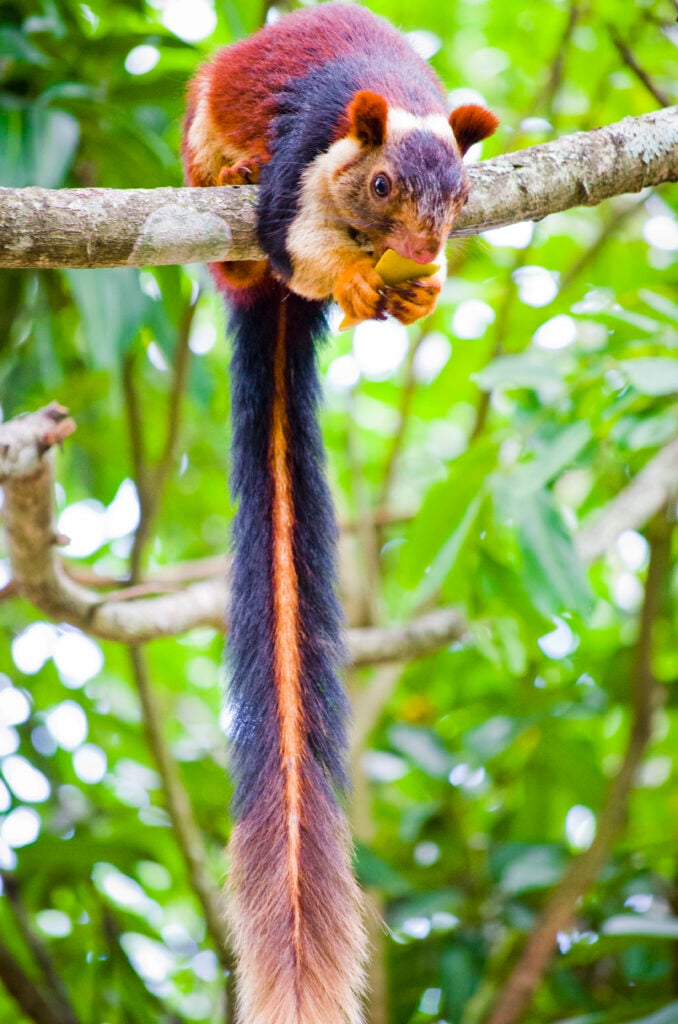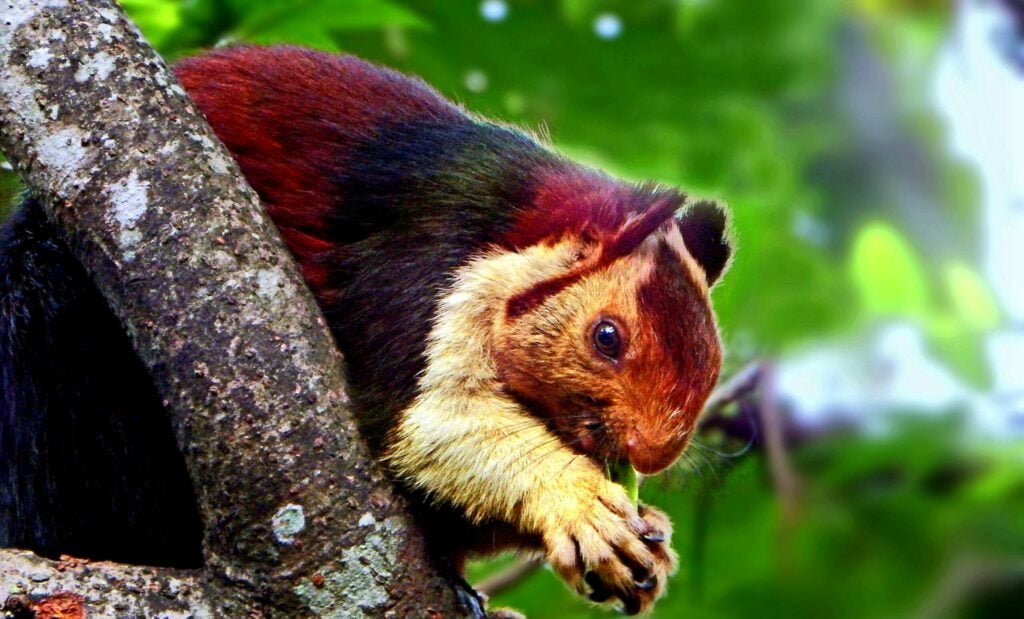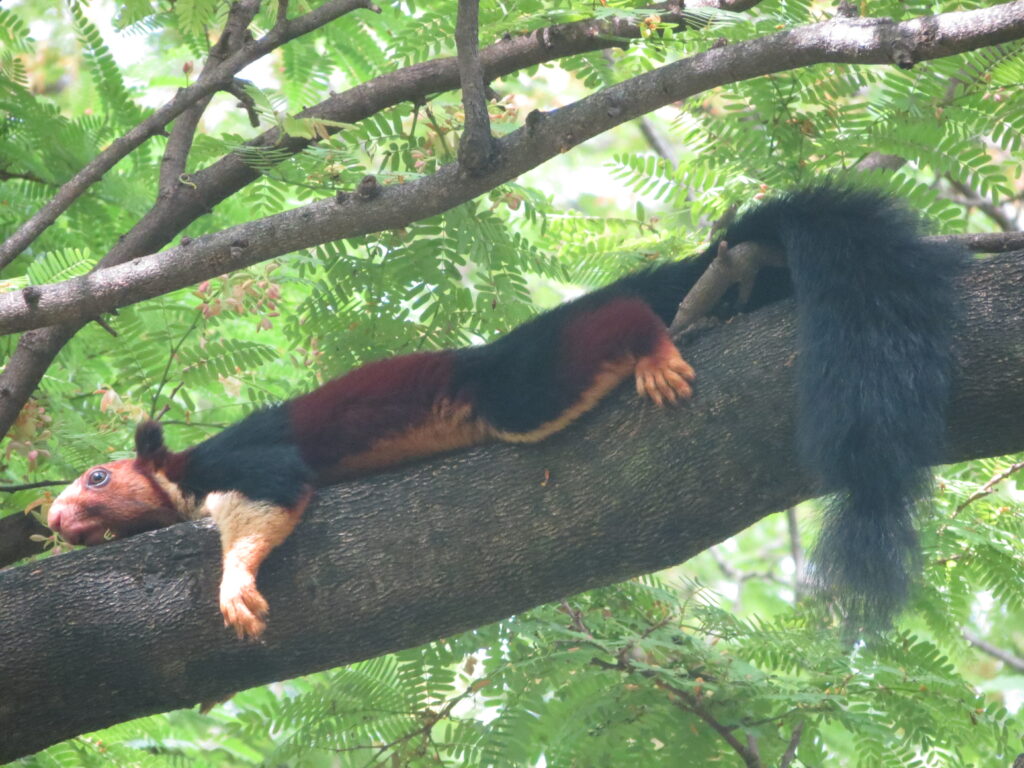Meet the Malabar giant squirrel. It is not just one of the world’s largest squirrels, measuring up to three feet long and weighing over four pounds, but one of the world’s most beautiful animals, with its multi-colored coat and distinctive, flowing tail.

Commonly known as shekru, the stunning creatures roam the forest canopies of the Indian peninsula. They mainly live in trees and create food stores of seeds, flowers, insects and even bird eggs or bark.
Despite being bushy, with flecks of violet, orange, maroon and blue, the technicolored coats can actually help to provide camouflage. The bright coats blend in with the contrasting colors and shade of the sun coming through the forest canopy.

Predators of the Malabar squirrel mainly include birds of prey – the black eagle, crested serpent eagle, crested hawk eagle, and brown fish owl – among the common ones, but apex predators such as the Indian leopard and various snakes can also target the Malabars when they descend below the canopy. The squirrel’s distinctive colors can also be used to attract mating partners.
“[The color] is as close to purple as one gets in a mammal,” John Koprowski told National Geographic. There are four subspecies of the squirrels, “fascinating in their large size, brilliant coloration, and penchant for feeding on some of the massive tropical fruits in the tree canopy,” Koprowski continued.
Read More: How mosquitoes are being used to fight dengue in Bali
The squirrel is the state animal in Maharashtra, in southeastern India. The most likely place to see the animals is at the Bhimashankar Wildlife Sanctuary, located in the Western Ghats mountain range and between the major cities of Mumbai and Pune. One of India’s 12 “jyotirlingas” – sacred shrines to the god Shiva – is also found in Bhimashankar.
While the Malabar squirrels were classified as a vulnerable species 20 years ago, the population has since stabilized and increased. This was largely due to the creation of the wildlife sanctuary, which was home to over 2,100 of the squirrels as of 2017, and potentially over 22,000 nests. The Malabars typically prefer to have individual nests rather than sharing them with their children. They also play a key role in seed dispersal in the forests.

An increased breeding effort was launched in Bhimashankar in 2018, meaning the squirrel population is likely now even higher.
Due to the amount of time it spends in the trees, the Malabar’s long tail provides balance and they are capable of leaping from one tree to another, as well as hanging from their hind legs. When they are startled or suspect a predator, they fall onto the branch and lie prone, as pictured above.





